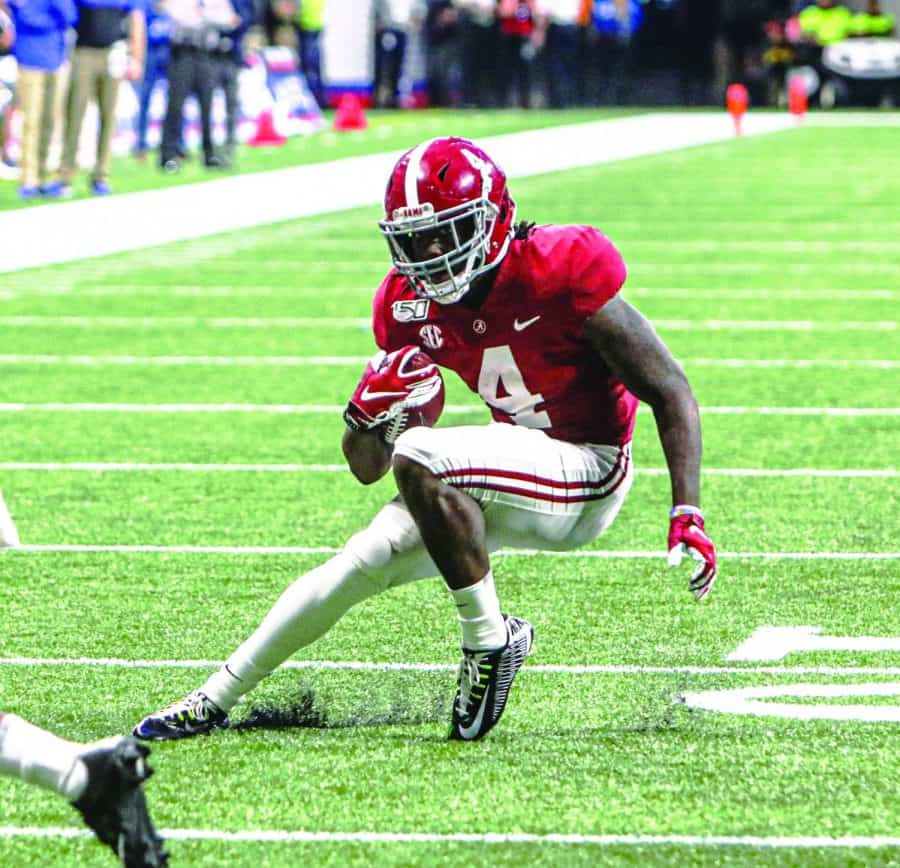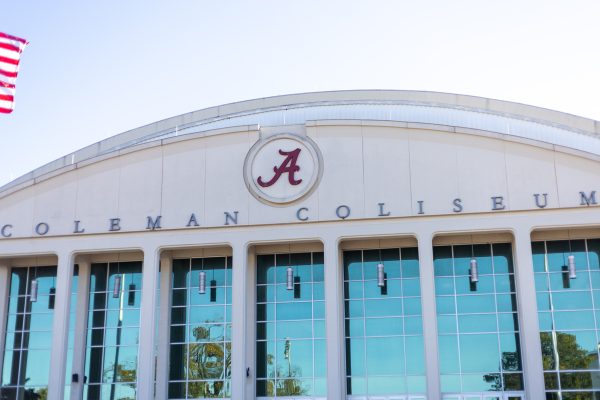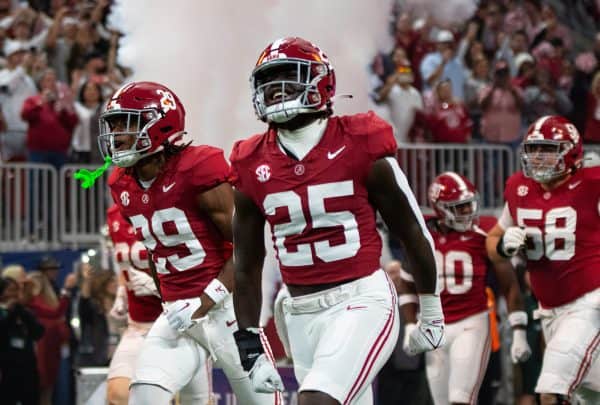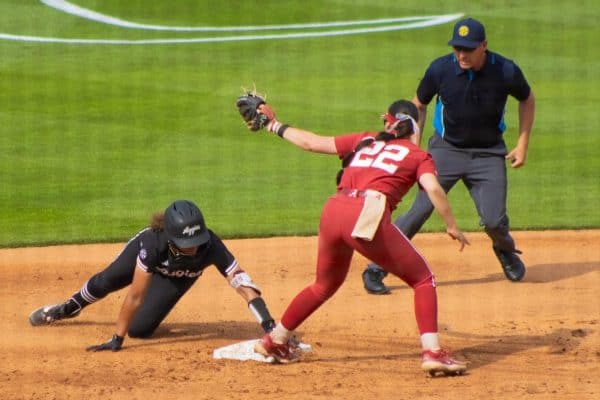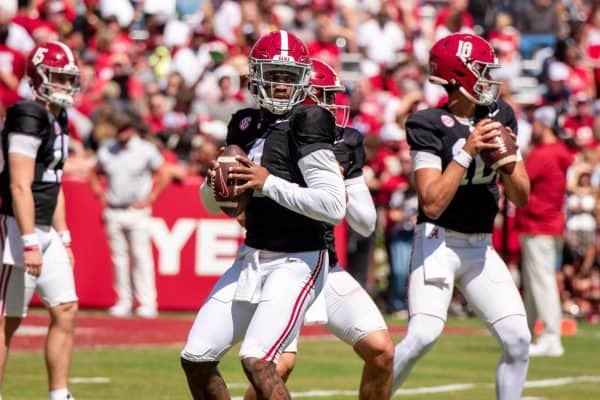Offense debuts new, more methodical approach
More stories from James Ogletree
At first glance, Alabama’s offense looked quite similar to last year’s in Saturday’s season opener against Duke. Tua Tagovailoa found receivers with pinpoint accuracy. Jerry Jeudy made a few eye-popping jukes. The offense scored a lot of points in little time.
Looking deeper at each drive, though, the offense took more time than normal. It racked up points at a torrid pace last year, scoring in under a minute 23 times. This year, under new offensive coordinator Steve Sarkisian, the team is looking to control the clock more.
“You know, last year we were more like score fast, score fast, big play, score fast,” said junior receiver Jerry Jeudy, who caught a career-high 10 passes. “This year, we’re like taking it slow play-by-play.”
Last season Alabama ushered in a revamped style of offense, moving the chains through the air instead of on the ground and implementing more modern elements like the run-pass option.
Statistics never before seen at Alabama were the result. Tagovailoa threw for nearly 4,000 yards despite only three previous Alabama quarterbacks surpassing 3,000 yards. Only one had ever reached 30 passing touchdowns; Tagovailoa tossed 43, some of them were bombs well downfield, and some of them were short passes that receivers turned into massive gains.
The Alabama offense is ever-evolving, though, and the difference can be seen even in comparing last year’s season opener to this year’s. These calculations exclude drives that ended at halftime or the end of the game.
The team’s average drive against Louisville lasted 6.1 plays and chewed up 2:47. Only one of its 11 drives lasted longer than 3:16.
Against Duke, on the other hand, the average drive lasted 7.1 plays, and the average was 3:15. Five drives exceeded that average, and three drives exceeded five minutes. The Crimson Tide also possessed the ball for nearly six more minutes of game time.
Even with a three-and-out and a lost fumble on its first two drives, the increase of efficiency was clear.
“I feel like when we step on the field, everything should be nice and crisp, nice and crisp,” Jeudy said. “Just keep practicing, and we’ll get better at that. It really just starts off with the energy and the mindset we have at the beginning.”
Efficiency is often measured by how readily an offense converts first downs. Against Louisville, it had 23 first downs in 67 plays for an average of a first down every 2.9 plays. On Saturday against Duke, those numbers were 30 first downs in 78 plays for a 2.6 average.
Mike Locksley, last year’s offensive coordinator, defined offensive efficiency as having fewer than 12% of offensive plays result in an error. Errors include turnovers, drops, sacks and penalties.
Alabama stayed below the 12% mark in every game last year except the SEC Championship, in which its error percentage was 19%. Its average error percentage in its other 14 games was 7.5%.
The Crimson Tide opened 2019 with a 6.41% error percentage against Duke, which was lower than any it recorded in the first six games last year.
For all the talk about sustaining drives, efficiency and controlling the clock, that by no means indicates fewer explosive plays.
“We’ve added some things to the offense, but we’ve also kept a lot of the things that were good for us last year,” coach Nick Saban said. “I think when you have the kind of skill guys that we have and the capabilities that we have with the quarterback, I think we need to make explosive plays.”
A 70-yard post route and a 3-yard gain on fourth-and-2 to keep a drive alive both require an effective offensive line, though. It all falls apart if the big guys up front can’t keep the quarterback upright or pry open running lanes.
Longer possessions makes it tougher on them, but they take pride in dictating their will.
“It’s definitely harder as an offensive line,” junior Jedrick Wills Jr. said, “but I feel like it’s kind of a come-to-heart moment, to see who’s a true man at that point.”

